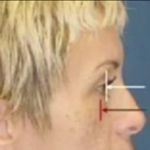
Fat grafting to the face is one of the best ways to rejuvenate your face to a more youthful look. Patients seeking fat grafting, also known as fat injections, are usually composed of two types:
- patients whose dermis has thinned due to the aging process and the face looks tired or sagging
- younger patients who have a volume deficiency in the upper areas of their face
In both cases, these patients have a loss of volume in the face. This makes the face seem tired and aged. Fat injections can restore the volume to your face to give you a youthful glow.
Ways fat injections improve your face
Ways that Fat injections can be used to help you rejuvenate your appearance include:
- eliminate or reduce bags in the lower eyelids
- substitute for cheek implants if you are seeking a higher profile in your cheeks
- increase general volume in the mid face area with a natural distribution of fat
- substitute for a mid facelift
Regenerative properties of our own fat tissue
In addition to making your facial structure look younger, fat injections can also improve your skin. More than a decade ago, researchers discovered that your own adipose tissue contains adult stem cells. These are cells found in your own fat that have regenerative properties. When the procedure is performed correctly, fat grafting can provide a new source of blood supply for your existing tissue and skin. Thus, the fat not only adds volume to your face, but it also has these natural regenerative properties to make your face look more youthful.
In summary, fat injections are a natural way to make a more youthful you. To read more about regenerative fat grafting please see my video, Stem cells from fat – Plastic surgery’s new frontier.



